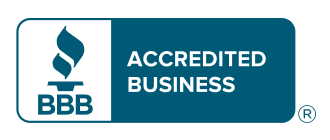Construction job sites are noisy, and to protect workers’ hearing, employers are required to provide hearing protection. However, selecting the right hearing protection for the job depends on the environment and the worker. We’re going to look at when hearing protection is required, who should wear it, the types of hearing protection available, and how to select the right protection equipment.
When is hearing protection required?
OSHA standard 1910.95 states that employers must provide hearing protection for those employees who are exposed to sounds at an average of 85 dB per eight hours. This means that if sounds are above 85 dB for less than eight hours, protection may still be required. The standard provides a table that spells out how long workers can be exposed to certain sound levels.
Duration per day, hours
8
6
4
3
2
1 ½
1
1/2
¼ or less
Sound level in decibels
90
92
95
97
100
102
105
110
115
For example, exposure to 100 dB only needs to occur for two hours to reach the protection threshold.
In almost all cases, OSHA will not give notice before an inspection. The exceptions to this rule include:
What to do when OSHA visits your job site
Noises that required you to raise your voice to speak to someone 3 feet away may be over the threshold. It may also be a problem if workers experience ringing or humming in their ears, have to shout to be heard, or experience temporary hearing loss after leaving work. There are several smart phone apps that can record and measure sound levels, including NIOSH’s Sound Level Meter App.
If a workplace exposes workers to loud noises, employers must create and implement a hearing conservation program. The program should include sound monitoring, employee notification of monitoring results, and hearing testing for employees. The testing must include a baseline and annual testing to determine if employees have suffered hearing impairment or loss.
Employers most first use administrative or engineering controls to reduce workers’ noise exposure. Administrative controls may require reducing the hours worked in the noisy environment. Engineering controls include purchasing quieter equipment or modifying the environment to reduce noise exposure. If these efforts do not reduce the sound exposure below the limits shown in the table, hearing protection must be provided.
Who should wear hearing protection?
Workers exposed to more than 85 dB on average over an eight-hour period must wear hearing protection. Employers are required to provide their employees with a variety of hearing protection devices (HPDs) and allow employees to select the type that works best for them.
Employers must also provide annual training in the use and care of the devices. The training should include information about the effects of loud noises, the variety of protection devices available, including the advantages and disadvantages of each type, care and use of protection, and an explanation of the purpose of hearing tests.
What are the types of hearing protection?
There are three types of hearing protection devices: earmuffs, earplugs, and ear canal caps, also called semi-inserts.
Earmuffs are designed to be worn outside the ear and provide the best protection. They are made with sound attenuating material and soft cushions, which are held together with a headband.
Earplugs are born inside the ears and are available in formable and non-formable varieties. Many earplugs are disposable or reusable. Foam, plastic, or silicone are the most common materials. Workers can also purchase custom molded earplugs from an audiologist or other hearing professional.
Ear canal caps aren’t fully inserted into the ear but stay in place just over the ear canal by a rigid headband. They are not customizable, and don’t always work for everyone.
What are the types of hearing protection?
The most effective hearing protection is one that a worker will wear willingly and consistently. If the protection is not worn, workers are vulnerable to occupational noise exposure, which can cause hearing loss or impairment.
To properly protect a worker’s hearing, protection devices must be worn correctly, fitted properly, and be appropriate for the noise. If workers are able to select their own hearing protection, they are more likely to wear it when necessary.
Protection devices are rated for the amount of noise reduction they provide. The rating is called the noise reduction rating or NRR. All protection devices are labeled with this rating; however, these ratings have been shown to differ in the real world as opposed to in laboratory conditions where the measurements are taken. Therefore, OSHA recommends that all noise reduction ratings should be reduced by 50%. NIOSH recommends reducing ratings by the factors below:
- Earmuffs, less 25%
- Formable earplugs, less 50%
- All other earplugs, less 75%
For example, if a formable earplug has a rating of 32 dB, the real reduction is closer to 16 dB.
It’s important to note that noise canceling headphones and earbuds are not effective hearing protection. They only provide soundproofing and aren’t effective for controlling occupational noise exposure.
Other factors to consider when selecting hearing protection include:
- Convenience and availability
- A worker’s belief that the device can be worn correctly
- A worker’s belief that the device will prevent hearing loss
- A worker’s belief that the device will not impair their ability to hear important sounds
- Comfort
- Adequate noise protection
- Ease of fit
- Compatibility with other personal protective equipment (PPE)
It is the employer’s responsibility to provide proper and adequate hearing protection for employees that work in dangerous environments. Using apps that calculate the severity of noise on a jobsite can help ensure that your employees are protected when they need to be. Providing a variety of protection device options allows employees to select a solution that works best for them. Hearing protection should be considered a necessary part of an employee’s PPE, as important as a hard hat.







